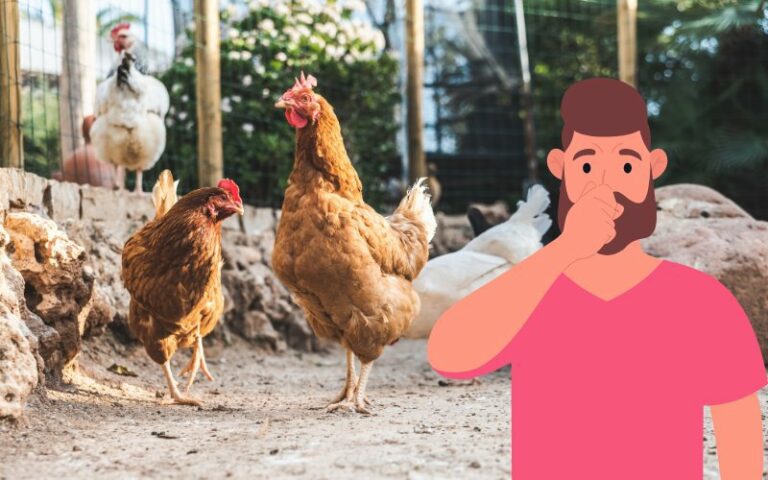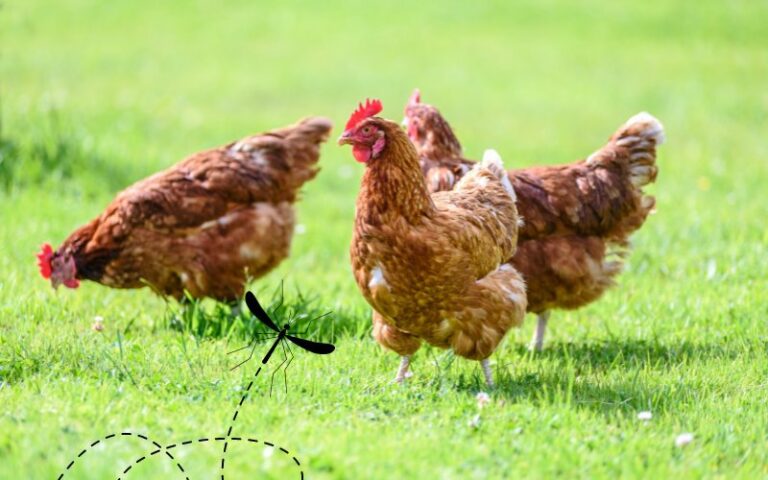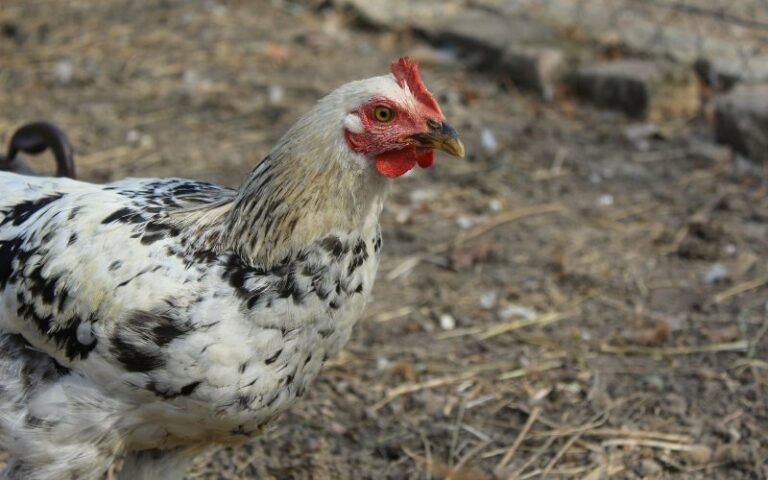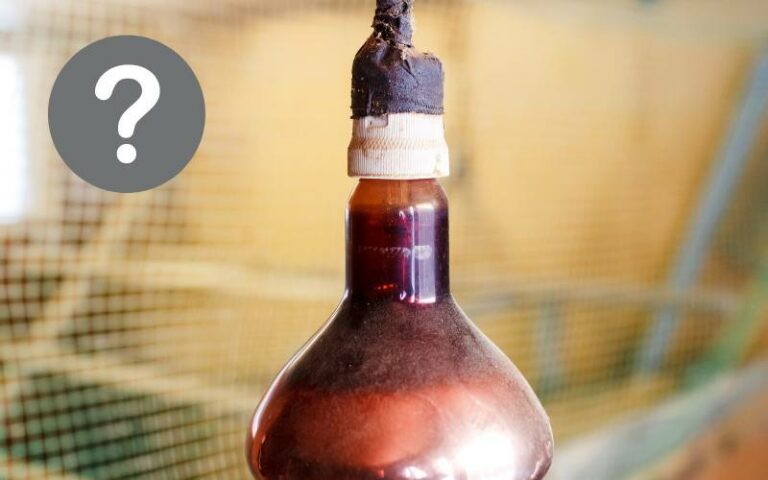Chickens Molting or Mites? (Which is It)
If you own chickens, you’re going to see a lot of feathers, whether they’re in the coop, in the nest boxes, in the feed, or floating through the air. It’s normal for chickens to lose feathers, especially in the fall. That’s when they go through the molting process in which they lose old feathers so that new ones can grow.
Molting can cause an alarming amount of feathers in your chicken coop, as well as bald spots on your chickens’ bodies. However, it’s a normal part of a chicken’s life and nothing to be worried about.
On the other hand, feather loss could be caused by mites, which are tiny parasites that feed on chickens’ blood. They are difficult to see as they tend to hide during the day, but they can cause scabs and feather loss. Mites won’t go away by themselves, so if you suspect that your chickens could have mites, it’s a good idea to confirm this and take steps to get rid of them.

Chickens Molting vs Mites (The Short Answer)
Molting is common, but mites are a problem. Notice where and when feather loss is occurring – molts happen in the fall and move from head to tail, while mites may cause feather loss at any time concentrated around the vent area. When chickens have mites, they tend to look sick, whether they’re lethargic, not laying eggs, or living in contaminated conditions.
8 Things You Can Do to Confirm Whether Your Chickens Have Mites
I’ve compiled a list of the most common symptoms of mites among chickens so you can determine whether your chickens are molting or have mites.
Visible Mites
Mites are hard to see, but they’re not invisible. Check your chickens’ vent areas, and if you see little red or gray bugs, you’re probably dealing with a mite problem.
Feather Loss Around the Vent Area
If the feather loss is only occurring around the vent area, a mite problem is more likely. Chickens tend to follow a pattern of head to tail when they molt, losing head feathers first, then back and breast feathers, and finally tail feathers. As a result, feather loss only around the vent can be a sign of parasites.
Feather Loss Occurring Out of Season
Chickens molt in the fall, but mite problems may occur throughout the year. If feather loss is occurring outside of the molting season, there’s a greater chance that it’s mites, not molting.
Lethargy or Weight Loss
If your chickens seem tired or sick, you may want to check them for mites. Mites suck chickens’ blood and it can cause temperament changes and weight loss in your flock.
Mites Spread From Other Birds or Animals
If one chicken in your flock has mites, the others are very likely to get it. So if you’ve recently acquired new birds and you’re unsure as to whether or not they had mites before integrating into your flock, you may want to check for mites.
The same thing goes for other animals. If you have other animals that have mites and live in the same general area as your chickens, chickens may get mites from them.
Reduced Egg Production
This isn’t a positive sign of mites as egg production may drop for many other reasons, including molting. However, blood loss makes it more difficult for chickens to lay eggs, and one of the most common reasons for blood loss is mites. As a result, if you notice reduced egg production along with a few other mite symptoms, you may want to check it out.
Pale Combs and Wattles
Combs and wattles may become paler when chickens are suffering from blood loss, which is typically caused by mites. Again, don’t jump to the conclusion that your chickens have mites if you notice paleness along with feather loss, as these can simply be symptoms of typical molting.
Contaminated Living Conditions
Mites are more likely to run rampant if your chickens are living in dirty conditions. Of course, it’s impossible to keep a chicken coop completely clean, but make sure that they have a run and that you’re changing their bedding regularly.
Look especially for dirty vent feathers as those are a sign of mites caused by dirty living conditions.
What You’ll Likely See If Your Chickens Are Simply Molting
Molting occurs regularly in the autumn and it’s a very normal process. Here are some surefire signs that all you’re seeing is a typical molt.
- You see lots of feathers underneath the roost. If you find a pile of feathers underneath your chicken roost in the mornings, your birds are probably just molting.
- Chickens are around 18 months old. This is when chickens are old enough to molt.
- Feather loss occurs in the fall: As the weather gets colder and the days get shorter, chickens usually start to molt.
- Pin feathers are visible. Sometimes chickens won’t go bald at all when they’re molting as the new feathers grow in as the old ones fall out. However, even if your birds are losing feathers faster than they can grow them, little pin feathers coming in are a good sign that they’re just molting.
- Feather loss starts at the head and moves to the tail. This is how chickens typically molt, so if you’re seeing this pattern, feather loss is nothing to worry about.
- Molting takes about six weeks. Older chickens, however, may molt slower and the process may take up to twice as long as that.
- Your chickens’ combs may lose their vibrant color. Color loss in the comb is normal and part of the feather loss process for chickens.
- Chickens may lay fewer eggs. Growing feathers takes a lot of protein, and chickens don’t have enough to produce eggs and feathers at the same time. As a result, you may notice a temporary decrease in egg production.






